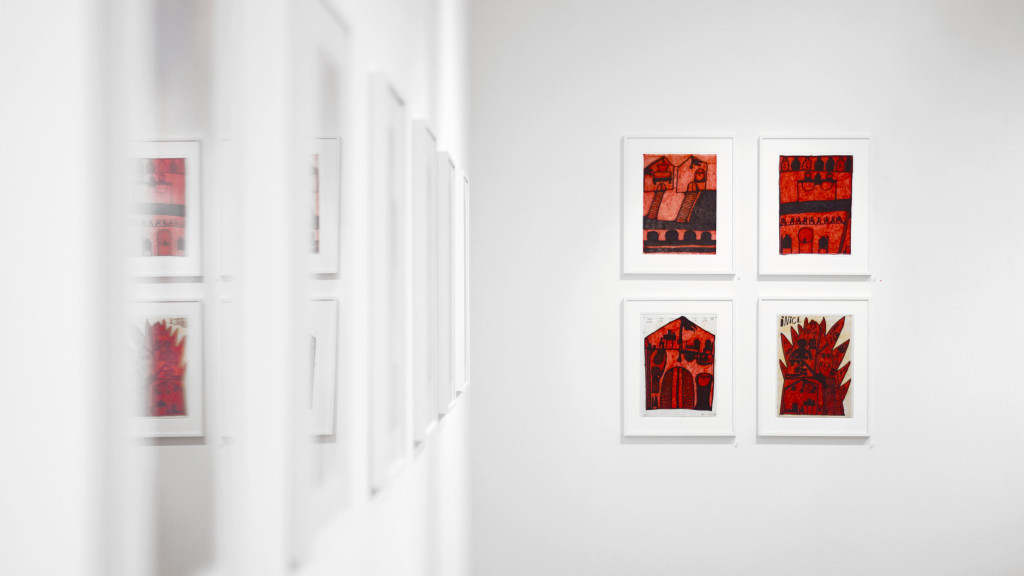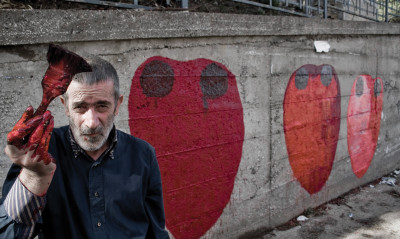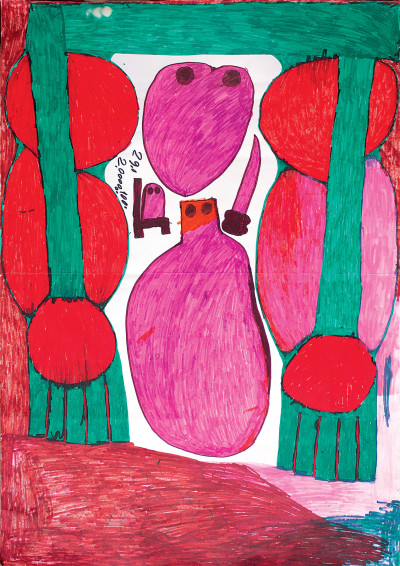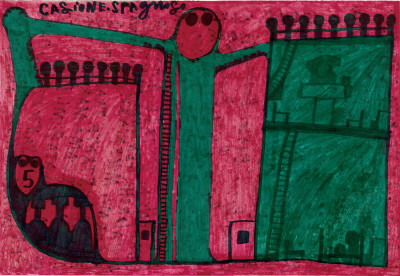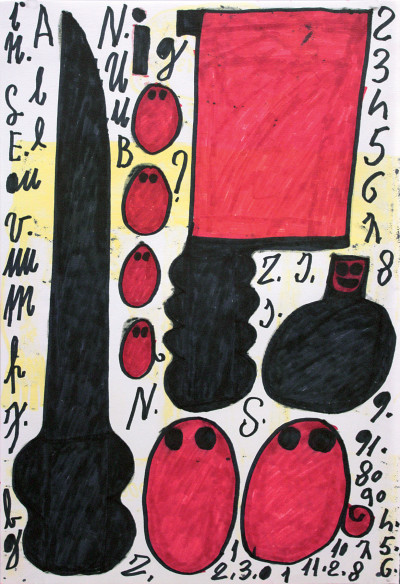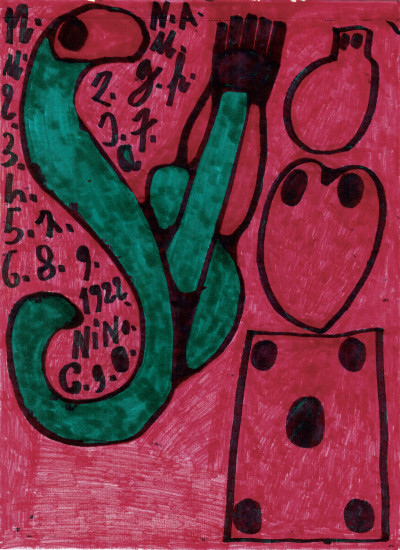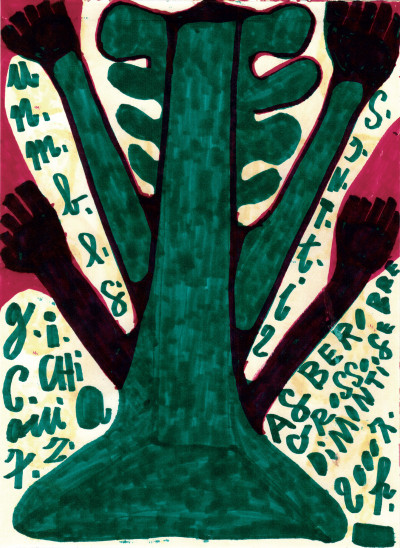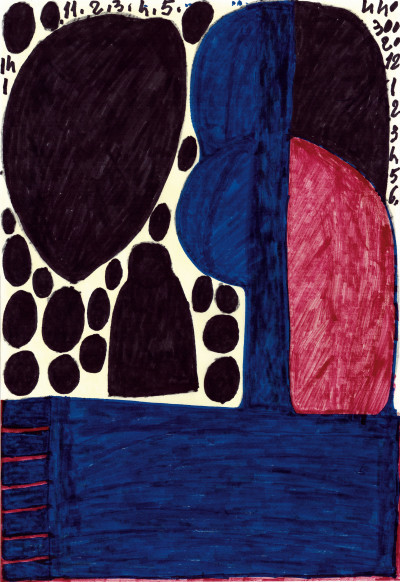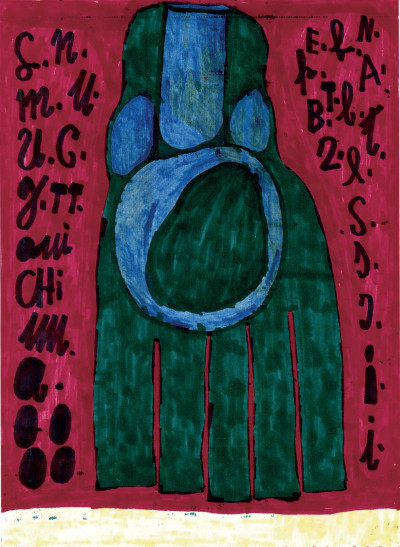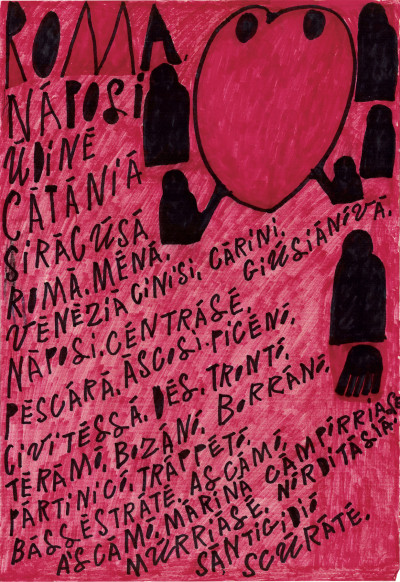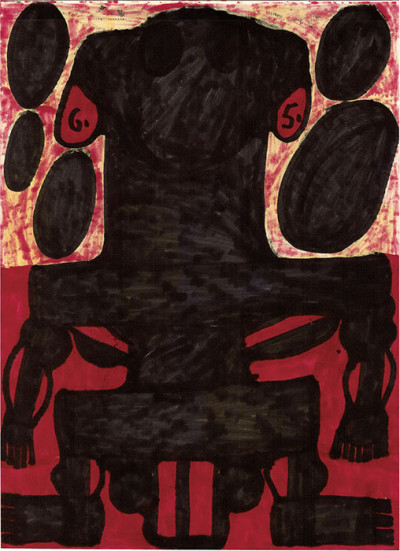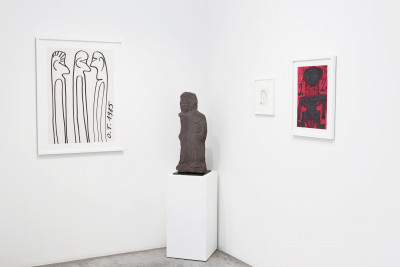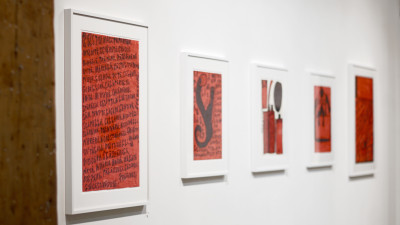Giovanni Bosco
The days of the Sicilian Giovanni Bosco were marked by popular Neapolitan songs and paintings of rare inventiveness that he performed on the walls of his city or on makeshift materials: dismembered or “overmembered” bodies, serpentes shapes and homunculus, cephalic hearts, words and signs punctuating the drawing’s interval. A colorist of the Sicilian streets, the artist is now part of prestigious collections, including those of Antoine de Galbert, abcd/Bruno Decharme (France), and Treger-Saint Silvestre (Portugal).
The painful life of the Sicilian painter Giovanni Bosco has always been set in Castellammare del Golfo. This town is situated between Palermo and Trapani, between the mountains and the sea. Pastor or fisherman: two variants of the same poverty were often offered to its inhabitants in the past. Giovanni’s family was not involved in maritime activities, so his childhood was spent tending sheep with his father, who soon left him an orphan.
It’s the second time his mother has been widowed. When Giovanni is born in 1948, she is only 18 years old. Giovanni Bosco only attends elementary school. In the heavy climate of a time waiting for judges like Giovanni Falcone and Paolo Borsellino, the young shepherd is unable to adapt to his tough job. He loses his herd, occasionally works in a marble quarry. While it is not clear how, he is convicted of a small cattle theft. He spends two years in prison in Trapani, where he is mistreated. During his incarceration, he learns, in 1976, that two of his younger brothers have also become involved in petty crime and that they have been murdered. Organized crime has taken umbrage at their juvenile misdemeanor. This tragedy precipitates Giovanni Bosco into psychosis and it seems that he is prescribed electroshock therapy. Maybe it is at the psychiatric hospital that he witnesses people doing art. He later recalls this by drawing and compulsively writing on makeshift media (found boxes, pizza boxes).
Back home, he devotes himself to creation despite the misery in which he is living. Lonely, exposed to the teasing of kids and yet protected by his fellow citizens. Smoking and singing the popular songs of Mario Merola, the Neapolitan star he loves, he fills the walls of the old houses in his neighborhood with frescos where hearts, robots, elastic figures, knife blades, mingle and challenge us. This repertoire of shapes is astonishing. A rich and coherent vocabulary, totally personal, is offered to the passer-by or the visitor. The former shepherd who no longer has a job refers to himself in his compositions as “Dottore di tutto”. A local artist notices his talent and encourages him, but it is from an outside perspective that he must be identified for what he really is: a great creator of art brut.
From 2007 onwards, things are moving fast. A general interest is emerging in his favor. He is no longer obliged to say that these “scribbles” could be valuable once framed. Now people are coming to buy some and his situation is starting to improve. People who love his work start dreaming… They don’t know that Giovanni has cancer and that, barely in his sixties, he is condemned. When an international exhibition and symposium is held in Castellammare del Golfo in the beginning of 2009, Giovanni is already no longer able to appear and enjoy the recognition.
Today, Giovanni Bosco is part of several major collections of art brut. In 2014, he is exhibited in the collective exhibition art brut, collection abcd / Bruno Decharme at the Maison rouge in Paris.

Preface : Eva Di Stefano & Jean-Louis Lanoux
Foreword : Christian Berst
Catalog published to mark the exhibition Giovanni Bosco : dottore di tutto 2, from March 8th to April 14th, 2018.
